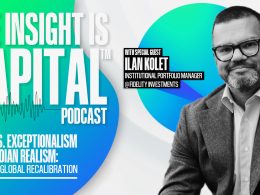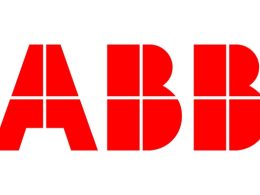by Hubert Marleau, Market Economist, Palos Management
August 8, 2025
The U.S. has been transformed into a high-tariff economy. With almost 200 countries now facing duties between 10% and 50%, the Yale Budget Lab projects the overall tariff rate to be 18.6%, the highest since 1933. What may seem amazing is that the U.S. has been able to get away with this without any meaningful retaliations, China and Canada being the only 2 valid exceptions. There are 2 reasons for this: First, its trading partners can ill afford not to do any business in America because it is the largest economy, the richest country and the biggest military power in the world. Second, governments tend to acquiesce to American trading demands because the U.S. is the only country that can offer a security blanket. Put simply, most countries have put up with US demands in return for accessibility and protection.
Unfortunately, not everything is copacetic. What is troubling is the unseen consequences of economic policies, which makes economics a live science. Frederic Bastiat, a French economist who exerted a foundational influence on how a free market economy works, had 2 timeless insights that are worthy of consideration given today’s trade war. First, “The state is the great fiction through which everyone endeavours to live at the expense of everyone else; and second, “When goods cannot cross borders freely, soldiers will, or smuggling and cheating will erupt.” America may find itself home alone, excluding itself from a free-trade zone in the rest of the world, and boycotted from ensuing negotiations triggered by nations believing that the US can now implement tariffs on any country, at any time, for any reason, disregarding any preexisting treaties or handshake agreements.
Given these discernments, the US may not be able to grow as comfortably as it has in the past. What is downright concerning is the complete disregard of the iron law of comparative advantage of trade by the administration, along with the delays incurred on business investment decisions and the erratic behaviour of consumers generated by the uncertainties of Trump's tariff program. Many businesses absorbed tariff-related costs in the early days of the trade war, but now they're running out of options, passing on more of their costs to consumers by raising the price of goods, which in turn is slowing household spending. Trade is asymmetric, where some industries have surplus capacity while others have deficits; and it is therefore not easily and quickly manifest in the data, only after a lag.
Little by little, tariffs have started to become embedded in consumer prices and business levels have been escalating. In June, retail prices for durable household goods rose 1.3% and for recreational and vehicles by 0.9%, while prices paid by firms for imported inputs also rose significantly. The New York Fed Survey of Consumer Expectations showed that perceptions of inflation increased to 3.1% in July, while the US Macro Surprise Index was in a free fall from 15.0 in June to 5.2, a 60% drop.
Stagflation pressure is often hidden from view in the beginning, but is nonetheless everywhere. Indeed, the fly is already in the ointment, but perhaps only for a short while. America is a hydra-headed superpower in just about every major industry. It has the deepest and most sophisticated capital markets in the world, a unique incessant churn of creative destruction; and invests more than any other country in artificial intelligence and R&D, making it the world’s most dominant and durable economic system, as well as the most productive; and all this is what may save its bacon. For example, AI investments accounted for 1.3% of the 3.0% GDP growth in Q2. Meta, Alphabet, Microsoft, and Amazon collectively spent $69 billion on AI infrastructure in the last quarter, according to Paul Kedrosky, a number crunching economist. Moreover, they plan to shell out up to $320 billion for AI data centers this year, up from $230 billion last year, per CNBC.
US labour productivity rose 2.5% in Q2, not only surpassing expectations, but galloping ahead in an accelerating fashion, while the energy bill is falling with the decline in the cost of oil, meaning that the non-inflationary potential of the economy is expanding, ironically helping to attenuate inflationary pressures stemming from Trump’s tariffs.
What Took Place in the Week ended August 8?
On Monday, the dip buyers moved en masse to pick up the pieces from Friday’s bloodbath resulting from an onslaught of tariffs against many trading partners, plus disappointing job data.They also responded to growing odds of a Federal Reserve interest rate cut in September. San Francisco Fed President Mary Daly argued that 2 quarter point cuts look like an appropriate amount of recalibration. The S&P 500 increased accordingly by 1.5% to 6330.
On Tuesday, US stocks finished modestly lower at 6299, down 0.5%, amid stagflation concerns: a downbeat ISM reading showed the services side of the economy had barely grown in July, while its employment index continued to contract, and the price index continued to expand. Nonetheless, a sharp fall in imports resulted in a narrower trade deficit in June, which raised the economic growth prospects for Q3 to 2.5% from 2.2%, according to the Atlanta Fed’s economic tracker.
On Wednesday, stocks rebounded during the early morning hours, following a parade of solid earnings reports, outweighing tariff chaos and stagflation fears, as it should. The S&P 500 notched another gain, rising 0.7% to close at 6345.
On Thursday, US stocks closed mostly lower, losing breath, as investors dissected the impact of President Trump’s sweeping tariffs across the world. Yet, the S&P 500 shed only 0.1%, ending at 6340.
On Friday, the S&P 500 returned to its all-time high of 6389 because the tech sector was strong.
The Near-Term Stock Market Outlook
Last week, I wrote: "Investors got a reality check. Given record high stock valuations relative to the money supply, nominal GDP, and several other broad economic indicators, they couldn't stomach a combination of a sticky rise in inflation and a sudden, unexpected, screeching halt in job creation in May, June and July, tagged with uncertainties of how the later-round effects of the slate of new tariffs may lower growth prospects. Right now, both the N.Y. and Atlanta Fed NowCasting models have real GDP estimated growth of 2.1% for Q3, a forecast that might prove to be too optimistic. Many Wall Street strategists are even suggesting that investors should consider a rotation out of cyclical and growth stocks into defensive sectors like healthcare, staples, real estate and utilities.”
While I am still of the opinion that the S$P 500 will touch 6600 and could melt-up higher to 7000, according to many market strategist, numerous central banks around are cutting interest rates, which is likely to stimulate the year-over-year expansion of the world money supply beyond 12.0%, which is usually bullish for stocks and the economy. The Atlanta Fed is tracking real growth at 2.6% for the current quarter. Nonetheless, I’m cautious, avoiding the high flyers and the memes where unjustifiable valuations reside, sticking with quality attributes such as high profit margins and strong balance sheet.
Next week, investors will disect carefully this week’s updates on consumer and producer price inflation because they should tell them more about the impact of recent tariffs . The Consumer Price index will likely show a pick up in headline and core inflation from June in July to 2.8% and 3.0% year-over-year respectively.













